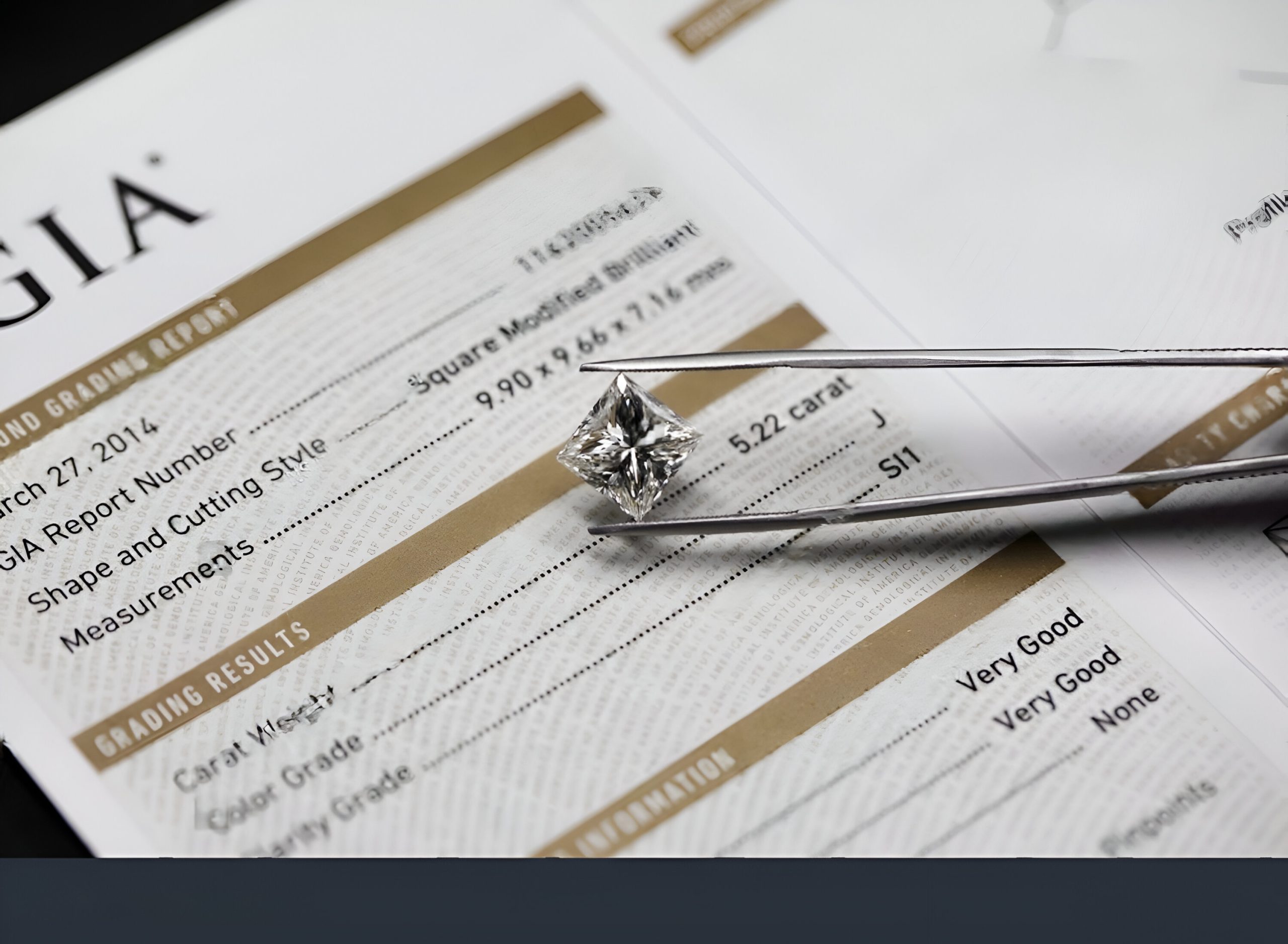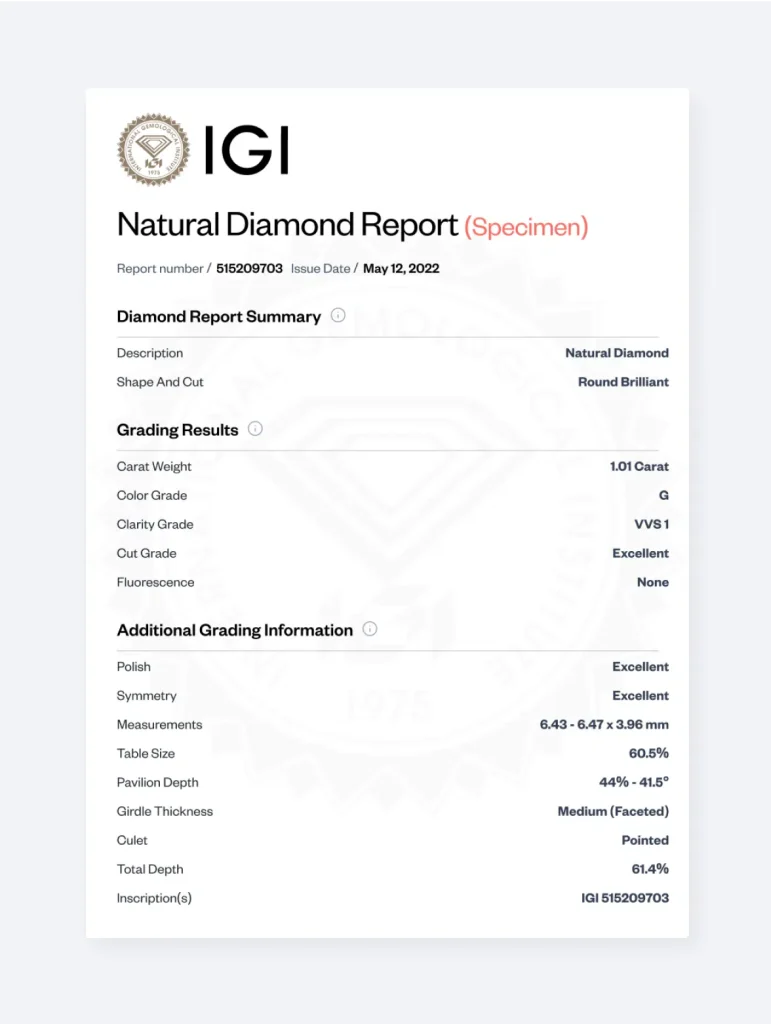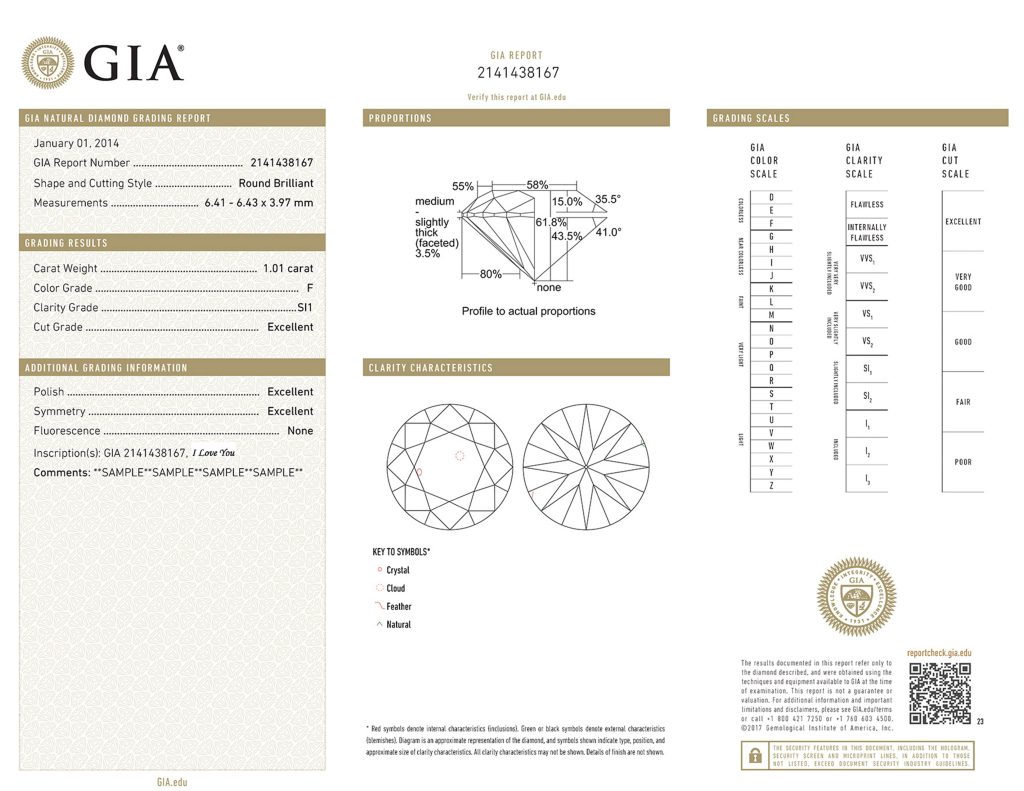How to Read a GIA or IGI Report (Step-by-Step with U.S./CA Examples)


A diamond grading report is an unbiased, professional analysis issued by trusted gemological laboratories such as GIA (Gemological Institute of America) and IGI (International Gemological Institute).
It contains vital details like:
Remember:
A report does not assign monetary value — it strictly certifies the diamond’s characteristics.
🔍 Where to Find It:
Top center or top left of the report.
The report number acts like a serial number for your diamond. It links your stone to its official grading documentation.
Many diamonds will have the report number microscopically laser-inscribed onto the diamond’s girdle — visible under magnification.
✅ Pro Tip:
Always request a jeweler to show you the inscription under a jeweler’s loupe to verify authenticity before finalizing your purchase.
🔍 Where to Find It:
Immediately under the report number.
This section identifies both the shape (outline view) and the cutting style (facet arrangement).
Common shapes:
✅ Pro Tip:
Shape influences price — for example, Round Brilliants usually cost more than Ovals or Cushions because they waste more rough material.
🔍 Where to Find It:
Directly under “Shape and Cutting Style.”
Three dimensions are listed:
Length × Width × Depth (in millimeters)
Example: 6.45 × 6.48 × 3.92 mm
✅ Pro Tip:
Perfectly round diamonds will have very close length and width values.
Deeper stones may look smaller face-up despite higher carat weight — be mindful!
🔍 Where to Find It:
Top section of the main report body.
Carat weight measures mass, not face-up size.
A 1.00-carat diamond typically measures around 6.4–6.5mm in diameter if cut ideally.
✅ Pro Tip:
Slightly “underweight” stones (like 0.90 ct) can offer huge savings compared to a full 1.00 ct with little visible size difference!
🔍 Where to Find It:
Within the 4Cs area.
Color is graded on a D–Z scale:
✅ Pro Tip:
In Canada and Northern U.S. climates with cooler lighting, diamonds graded G–I often appear bright white to the naked eye.
🔍 Where to Find It:
Main 4Cs section.
Clarity evaluates internal flaws (inclusions) and external marks (blemishes).
Grades are:
✅ Pro Tip:
An eye-clean VS2 or SI1 diamond offers stunning beauty for less — especially ideal for larger carat sizes.
🔍 Where to Find It:
In the Cut section, often highlighted.
The cut grade impacts brilliance more than any other factor.
Grades are:
✅ Pro Tip:
Always prioritize Excellent Cut when buying a Round Brilliant — it directly affects how fiery and sparkly your diamond appears under everyday Canadian and U.S. lighting.
🔍 Where to Find It:
Listed after Cut grade.
Grades range from:
✅ Pro Tip:
Both “Excellent” Polish and Symmetry are a must if you want your diamond to maximize light return and look flawless up close.
🔍 Where to Find It:
Bottom or side section of the report.
Describes how the diamond glows under UV light.
Levels:
✅ Pro Tip:
Fluorescence can help slightly warmer diamonds (like a J color) appear whiter.
However, for D–F color stones, prefer “None” to avoid unwanted haziness.
🔍 Where to Find It:
Lower portion of the report.
Important notes that don’t fit into standard grading boxes — like:
✅ Pro Tip:
Always review comments.
Some minor inclusions (like tiny clouds) may not impact sparkle but could affect value if prominent.
| Feature | GIA | IGI |
| Reputation | Highest trust internationally | Trusted for retail, especially lab-grown |
| Strictness | Ultra-strict grading standards | Slightly more relaxed on color/clarity |
| Best For | Investment-quality diamonds | Value buyers + lab-grown diamond shoppers |
| Where Popular | Canada, U.S., Europe | Canada, U.S., Asia |
Here are the IGI Certificate you can check compare with youres

Here are the GIA Certificate you can compare with your.

At JewelNests, every loose diamond and finished jewelry piece comes with an official GIA or IGI report.
This ensures you can shop with full confidence, whether you’re searching for a dream engagement ring in Toronto or celebrating a milestone in New York.
💎 Authenticity. Integrity. Brilliance. That’s the JewelNests promise.
Learning how to read a GIA or IGI report empowers you to shop smartly, avoid scams, and choose a diamond that’s perfect for your style and values.
With JewelNests as your trusted guide, you’re ready to say “yes” to brilliance that lasts a lifetime.👉 Start your diamond journey today at JewelNests — Made in Canada, Crafted for Love.
Buying a diamond is one of life’s most meaningful investments.
Beyond the sparkle, smart shoppers in Canada and the United States know the importance of checking a grading report — a scientific document that confirms the true quality and authenticity of a diamond.At JewelNests, proudly a Made-in-Canada brand with over a decade of diamond and jewellery manufacturing expertise, we believe in complete transparency.
Here’s your step-by-step guide to confidently reading a GIA or IGI diamond report.